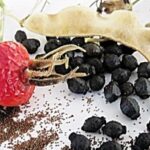plant propagation
Plant propagation is a cost free or at least a very inexpensive way to grow your plant stock. It only takes a few tools that you probably already have: good secateurs, a shovel, planting medium, rooting hormone and a few pots.
Seeds
The easiest way to grow your plant stock is by using seeds harvested from plants you already have in the garden. Some plants, like lettuce and celery, will only germinate if exposed to sunlight; others, like phlox and alliums, only if they are completely covered.
Most plants will benefit from being started indoors six to eight weeks before the last frost. There are a few that either do not like being transplanted or are hardy enough to take a light frost. Those plants are better off being planted directly outdoors. A few examples: peas, carrots, corn, beans, nasturtiums, morning glory, cucumbers.
Most perennials benefit from being sown directly outdoors at the end of summer. This gives the plants the chance to experience the cold cycle they have adapted to and makes them emerge stronger in their own time in spring.
Hard seeds like nasturtiums, morning glory and four-o’clocks will germinate faster if soaked in warm water for 12 hours prior to planting.
When: Plant annuals in spring and perennials and biennials at the end of summer, when the heat died down a bit.
Division
Another popular way to increase your garden stock is by dividing mature plants. Most herbaceous perennials really need dividing in order to keep blooming and healthy. Among those, a few examples: heuchera, daylilies, pampas grasses.
Other plants, like daisies and bee balms will quickly spread if left to their own accord. Dividing them is a good way to control their growth and fill up bare spots in your garden.
To divide the plant you can either dig it out completely and break the root ball into smaller parts or slice part of a clump with a shovel. If you can do the latter, the advantage is that the roots of the mother plant will remain undisturbed.
When: Divide spring blooming plants in the fall and fall blooming plants in spring.
Rhizomatous plants
Among these: bearded irises, peonies, lily-of-the-valley, mint.
For small rhizomes, just pull out of the dirt and replant somewhere else. For larger rhizomes, dig the plant out at the end of summer after it finished blooming and cut up the root in 2-4 inch sections with leaf growth at one end.
When: End of summer or fall, after they have finished their vegetative cycle.
Layering
This works great with ground covers, strawberries, raspberries, and spider plant. Take a runner and tie it down to the ground with a pin. After the plant develops roots you can cut it loose from the mother plant and move it someplace else.
When: whenever they decide to grow runners.
Cuttings
Most woody plants can be propagated like this, especially roses, for which this is the basic method of propagation. Other plants to be propagated by cuttings: butterfly bush, weigela, pelargonium, fuchsia, delphinium, forsythia, chrysanthemums, hydrangeas, African violets.
There are four basic types of cuttings: tip cuttings (soft, green), stem cuttings (woody), leaf cuttings (leaf and petiole) and root cuttings.
For stem and tip cuttings, a minimum 3 inch length will ensure the viability of the plant. Wounding the cutting (making a longitudinal cut or crushing the bottom) will stimulate the plant to grow new roots.
Many plants, like mint, will grow roots if placed in water. Other plants, like African violets and hydrangeas, will be happy to root if you stick a leaf with a long petiole in the dirt. For plants with large leaves, like hydrangea, it helps to cut off about half of the leaf to lessen the strain on the developing root system that feeds it.
If you have rooting hormone, I strongly recommend it.
When: For fall blooming perennials and annuals, start cuttings when the danger of frost has passed in spring. For spring blooming perennials, start the cuttings in the fall and protect them under cloches (a glass jar would work just fine) over winter. It is very advantageous to the plant to go through a cold season in its natural surroundings, it gives it a stronger root system. This is especially true for roses.
Bulbs, corms and tubers
Some bulbs, like lilies, will start spreading out in a scaly pattern. Each scale with roots can be separated to start a new plant.
Onions can be vertically chopped and divided. For hyacinths there is a method called scooping: cut the roots off a bulb and scoop out the central part right underneath them to expose the bulb layers. Place the bulb upside down half buried in a tray full of wet sand. Place the tray in a dark warm location. In 12-14 weeks bulblets will start forming on top of the large bulb. Plant the bulb upside down with the bulblets right below the surface. Let the plant go through its vegetative cycle. The bulbs can be lifted and separated in the fall.
When dividing tubers, make sure to have at least one viable “eye” on each section.
When: In the fall, after the plants go dormant.
Dropping and stooling
Dropping consists of pushing down and covering most of the plant stems with compost or good quality dirt, and wait for the plant stems to develop individual roots. The newly rooted plants can then be separated and replanted. This works for heathers and rhododendrons.
For the stooling method mound up dirt high around the bottom of the plant, to give the stems an opportunity to grow roots. A few examples of plants for which this method works: lilacs, willows and dogwoods.
When: Drop and stool in spring, divide and cut in the fall.
Please keep in mind that some plants can be successfully propagated through several of these methods.
Here are some good resources for learning more about plant propagation:
American Horticultural Society Plant Propagation: The Fully Illustrated Plant-by-Plant Manual of Practical Techniques – Alan Toogood
Propagation Basics: Tools Techniques Timing – Steven Bradley
Secrets of Plant Propagation: Starting Your Own Flowers, Vegetables, Fruits, Berries, Shrubs, Trees, and Houseplants – Lewis Hill




 Previous Post
Previous Post Next Post
Next Post




